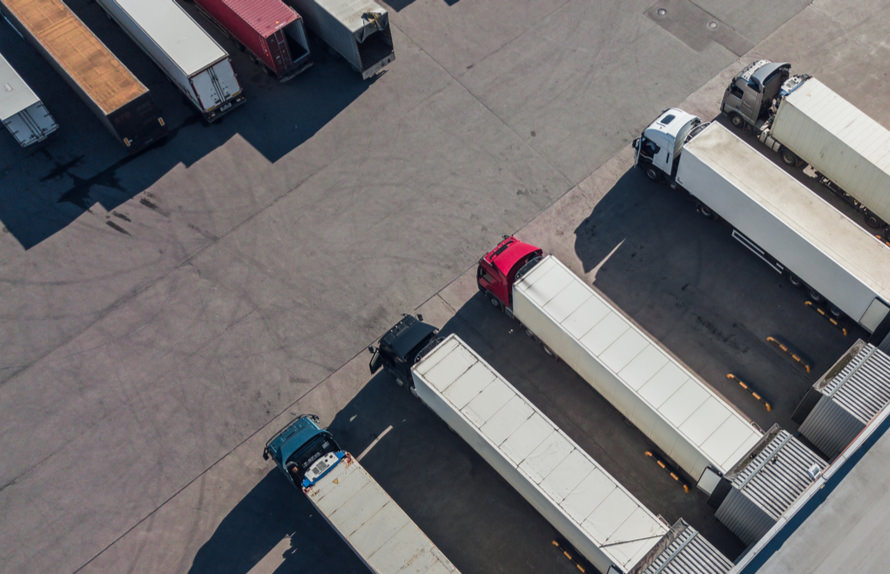
The US government has officially ended the de minimis exemption (also known as Section 321) for all countries, meaning low-value imports under $800 will now be subject to duties and customs scrutiny. Read how it’s impacting ecommerce brands.
EU <> US trade deal is done. 15% tariffs on EU made goods and essentially 0% on US made goods. The China 30% tariffs received a 90-day extension (10% Baseline + 20% + section 301 stays in place for a least another 90 days). Read the most updated August 2025 tariff rates.
April 2, 2025 has been named “Liberation Day” by current US President Trump, which is an attempt to take a new stance on international trade, by implementing many tariffs across many countries.
Starting in February 2025, he signed an executive action that raised current tariffs on imports from China, applied new tariffs on imports from Canada and Mexico, and suspend the Section 321 customs de minimis entry process, which previously allowed shipments under $800 to enter the US duty-free. Since then, many iterations, delays and changes have been enacted. Liberation Day is the day he has said he will announce the next set of trade and customs changes.
See below for the current policies.

Key Trade Policy Updates
This will be updated with new information as it’s made available.
De Minimis Threshold Changes (as of April 2, 2025)
- The de minimis threshold for goods originating from China entering the U.S. will been reduced to zero effective May 2, 2025.
- The removal of the de minimis exemption for Mexican and Canadian-origin goods is currently on hold, pending methods to collect duties from low-cost goods.
- For all other imports, the US de minimis threshold remains $800.
New US Tariffs on Key US Trading Partners
- China-origin goods: 34% tariff on imports. This is in addition to the 20% added in February 2025, and to pre-existing tariffs that can range from 7.5% to 100% (effective April 3, 2025).
- EU-origin goods: 20% (effective April 3, 2025).
- Vietnam-origin goods: 46% tariff on imports (effective April 3, 2025).
- Taiwan-origin goods: 32% tariff on imports (effective April 3, 2025).
- Japan-origin goods: 24% tariff on imports (effective April 3, 2025).
- Canada-origin goods and Mexico-origin goods remain with a 25% tariff, except for Canadian energy resources, which will face a 10% tariff (effective March 4, 2025).
What is the Immediate Impact of Liberation Day on Ecommerce Brands?
These tariffs, introduced under the Trump administration, have created ripple effects throughout global supply chains, affecting costs, shipping operations, and overall market competitiveness.
Ecommerce brands are scrambling to adjust and create new supply chain strategies to manage costs. Some tactics that may help brands mitigate rising tariff rates include:
- Diversify Suppliers – Expanding sourcing options beyond China can help mitigate tariff exposure and maintain competitive pricing.
- Negotiate Better Terms – Working closely with suppliers to negotiate pricing, bulk order discounts, or delayed payments can reduce immediate financial strain.
- Leverage U.S. Warehousing – Holding inventory domestically can help avoid sudden tariff-induced price hikes and ensure faster order fulfillment.
- Optimize Shipping and Fulfillment – Partnering with 3PL providers can help streamline logistics and offset increased shipping costs.
- Explore Product Differentiation – Offering unique or customized products can help maintain strong profit margins despite higher costs.
Effects of Rising Tariffs on Ecommerce Businesses
Rising Product Costs
One of the most immediate challenges for ecommerce retailers is the increased cost of importing goods. Many online sellers, particularly those relying on platforms like Amazon, Shopify, and eBay, source their products from Chinese and overseas manufacturers due to cost-effectiveness and supply chain efficiency. These tariff increases mean:
- Higher wholesale costs for inventory.
- Reduced profit margins for sellers unless they pass the price increases to consumers.
- A shift in sourcing strategies as businesses look for alternative suppliers in countries that have lower tariff rates.
Impact on Dropshipping and Private Label Brands
Many ecommerce businesses operate through dropshipping models or private label branding, heavily relying on Chinese manufacturers and suppliers. The steep Chinese tariffs make these models less viable due to:
- Higher per-unit costs that diminish the competitiveness of products.
- Delayed order fulfillment as businesses explore new manufacturing hubs.
- The need for sellers to renegotiate terms with suppliers to mitigate cost increases.
Changes in Consumer Behavior
With product prices rising, US consumers may shift their purchasing habits:
- Increased preference for domestic alternatives to avoid higher costs.
- Greater focus on used or refurbished goods as opposed to brand-new items.
- Slower sales cycles as consumers become more price-sensitive.
Looking Ahead: How a Section 321 Suspension Will Affect Ecommerce Brands
When a suspension of Section 321 takes effect, brands that previously benefited from duty-free imports will now face significant tariffs and taxes on goods sold to US customers.
These changes present an immediate financial challenge, forcing brands to either absorb the increased costs—reducing profit margins—or pass them onto consumers through price adjustments. For many DTC businesses, even small cost increases can disrupt pricing strategies, conversion rates, and overall competitiveness in an already tough market.
When a suspension of Section 321 takes effect, brands that previously benefited from duty-free imports will now face significant tariffs and taxes on goods sold to US customers.
Beyond the financial impact, the logistics and operational complexities of cross-border shipping will increase significantly. All imports, regardless of the value, will now require:
- Formal customs entries for every shipment
- Additional processing and paperwork, increasing administrative overhead
- Full payment of newly imposed tariffs on all imports
- Significantly longer transit times, creating potential delays for customers
- A decision on who absorbs the costs—either the brand or the end customer
Previously, Section 321 allowed for a streamlined import process, enabling brands to move goods quickly and cost-effectively. Now, with these new barriers in place, brands operating at high volumes will face slower, more complex fulfillment workflows, making cross-border DTC shipping less viable.
To adapt, many businesses will need to explore alternative order fulfillment strategies, such as US-based warehousing, to maintain cost efficiency, delivery speed, and a seamless customer experience while avoiding customs bottlenecks and unexpected tariffs.
For Ecommerce Brands Shipping to the US
- Elimination of de minimis threshold: Previously, goods valued under $800 USD could enter the US duty-free under the de minimis rule. Now, all shipments of Chinese-origin goods are subject to tariffs and duties regardless of value. As of now, this only applies to Chinese-made, but will likely affect Canadian and Mexican-made goods in the near future.
- Tariffs apply based on country of origin, not shipment location: For example, a product made in China but shipped from France to the US would still incur the 10% tariff on Chinese goods. Likewise, a product made in Indonesia but shipped from China would not incur the tariff.
- Increased landed costs: The new tariffs will raise the total cost of goods sold in the U.S., potentially affecting pricing strategies and profit margins.
- Enhanced customs compliance: Merchants must now navigate more complex customs procedures, including detailed documentation and potential delays, due to the removal of the de minimis exemption.
For US Ecommerce Brands Shipping to Canada and Mexico
- Tariffs on hold: The planned 25% retaliatory tariffs on U.S. goods entering Canada and Mexico have been paused for one month pending negotiations.
- Ongoing uncertainty: Businesses should remain prepared for potential cost increases if negotiations do not result in a permanent resolution.
Understanding Section 321: Duty-Free Imports for Low-Value Shipments
Section 321 is a US Customs and Border Protection (CBP) designation that allows goods to be imported duty-free, provided they meet the de minimis value threshold. Currently set at $800 USD, this means most shipments valued at or below this amount can enter the US without incurring customs duties, import taxes, or tariffs. This provision is particularly beneficial for ecommerce businesses that ship low-value goods directly to consumers.
Read the complete guide to section 321 for more information.
CBP manages these shipments through different data pilot programs. Section 321 is released on the manifest data, whereas Entry Type 86 (T86) is a formal customs entry that extends Section 321 benefits to shipments requiring Partner Government Agency (PGA) oversight. T86 entries use the Automated Commercial Environment (ACE) system, providing better supply chain visibility while requiring additional data elements for compliance. While most commodities qualify under T86, understanding the distinction between Section 321 and T86 is crucial for optimizing cross-border logistics.
Tags: International








